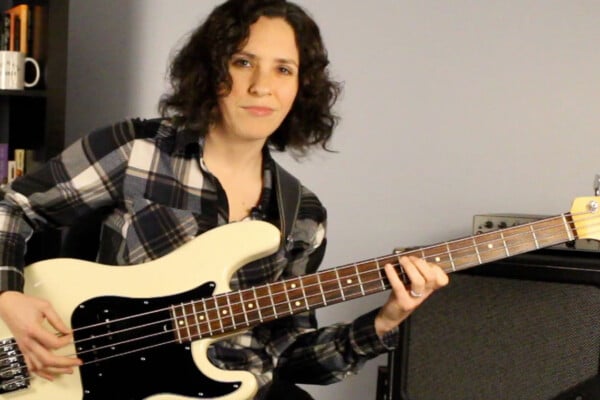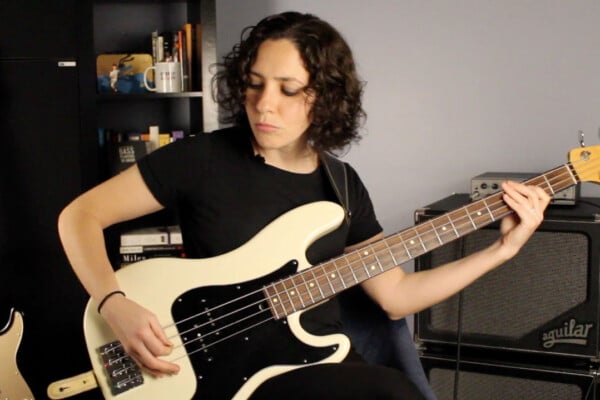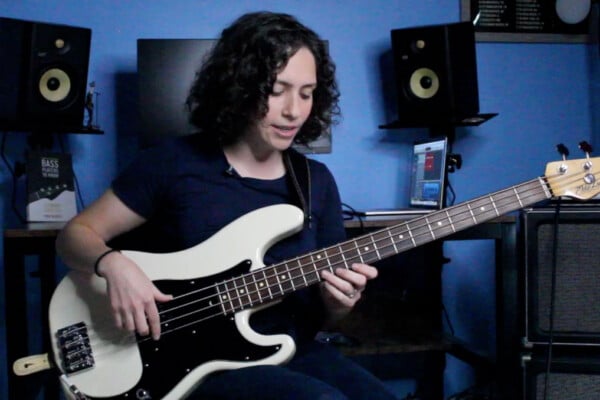Right-hand technique for upright bass: pizzicato
There is no “one way” to play pizzicato. There are a few principles to bear in mind that are helpful no matter what technique we use. The main idea we need to communicate is that the left hand does most of the work in sound generation. Playing hard with the right hand can be counterproductive, causing injury and choking the sound. The right hand has a substantial role in sound: where we pluck the string; how fast we get our finger(s) “through” the string as we strike it; and-most importantly-how much flesh we use to address the string are crucial to how much fundamental tone we get, and what its character might be.
The string is long relative to the fingers. When the string is vibrating, it is vibrating not only as a whole, but in its rationic fractions; so, one pitch of a vibrating string is really a stack of pitches known as “the overtone series.” “Tone” is a function of the balance between the tones in the overtone series. In the bass, the more fundamental, the better; we want to emphasize the vibration of the entire string.
When the string is struck with a small contact area, the higher harmonics of the overtone series are “selected.” There are harmonic “nodes” all over the string, and if a string is struck by only the tip of a finger, the balance of harmonics shifts to the upper end of the overtone series. If more of the string’s length is addressed by the strike of the finger, then some of the upper harmonics are muted and the fundamental is emphasized.
Many of the most respected upright bassists strike primarily with the side of the index finger. Some lay the middle finger over the index finger and strike with the index in order to get more arm weight into the string. Some strike with the tips of the index and middle fingers at the same time. Some strike mainly with the middle finger. Some alternate between the first and middle fingers, primarily at faster tempos. For faster passages, some use the tips of both the first and second fingers, alternating, and may pluck higher on the fingerboard closer to the left hand to get a darker sound. Learning two-fingered right hand technique is a good idea, although some choose not to use this technique at all in favor of a uniformity of fundamental sound. In my own opinion, variety is the spice of life; if an instrument can make a sound, or make contrasting sounds, we should familiarize ourselves with them and include these options in our sonic palette.
In all of the above instances, the right hand position resembles the relaxed hand as it is brought up from the side, as in previous examples of “fundamental” technique. There is a “C” shape made in the gap between the thumb and the index finger. The wrist is slightly bent (pronated) so the hand hangs loosely from the arm, like a ball attached to a stick with a swivel. We can use leverage and gravity through the wrist to swing the weight of the hand into the string in any of the techniques mentioned above, in a sort of “whipping” action. The thumb may rest on the edge of the fingerboard, or in some cases, as in two-fingered technique, on top of it. As mentioned previously, positioning the thumb behind the fingerboard can assist in opposing the pressure of the left hand, as well as in shifting the position and balance of the bass as different angles of address are needed.




I don’t play often, been using medical or hockey tape to protect fingers, any advice on tape vs glove or how to toughen up? Thanks